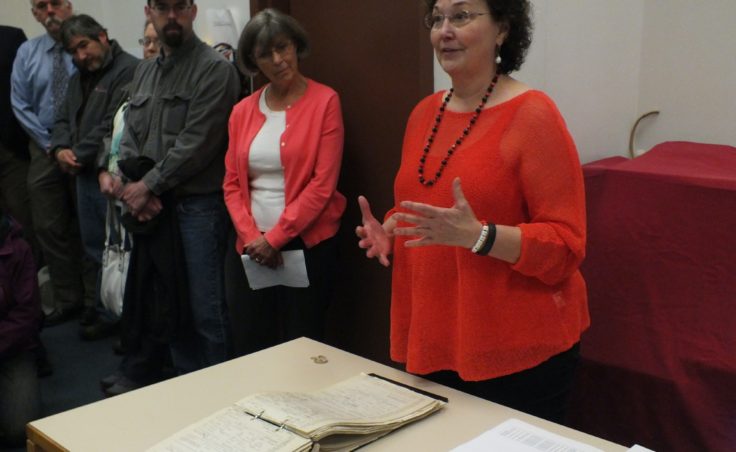All of the containers have arrived in Juneau and have been unloaded.
Alaska State Archives officials said on Thursday that they were wrapping up with moving 3,000 cubic feet of Alaska Railroad and Territorial Court records into the new State Libraries Archives and Museum. Shipped down in three 40-foot containers from the shuttered National Archives and Records Administration branch in Anchorage, the records are being placed on the second floor of the new SLAM vault. They are only about a quarter of the Alaska records that were stored at the NARA facility, but they are valued highly by Alaska researchers because of their historical content and public accessibility.
The $139 million SLAM project is now under construction in downtown Juneau and should be finished in Spring 2016.
The old Alaska State Museum is not even a shell of its former self. Most of the exterior has already been stripped away and only some of the interior and steel supporting framework remains. The 47-year old facility is being demolished to make way for the rest of the SLAM project.
So, why are all those railroad and court records important?
During a recent ceremony formalizing the transfer of the NARA records, retired Fairbanks Superior Court Judge Niesje Steinkruger opened up an old book she acquired which contained the original birth, marriage, and death records from Galena and Nulato dating back to 1914.
“There will be more that make their way as we reassure people that there is a safe place for them, that they will not be digitized and then destroyed which I find is people’s biggest fear,” Steinkruger said. “Families want to see the original, if they can.”
Steinkruger said the court records tell interesting stories about death inquests, search and rescues, adoptions, mental commitments, estates, criminal cases, and village boundaries in early Alaska.
“They’re just fascinating to read.”
Steinkruger says her involvement in the Morningside Project and discovering that most of the original hospital records were destroyed by fire was what prompted her to check the Alaska court archives.
At least 3,500 people were taken from their Alaskan village or community, and hauled off to Morningside Hospital in Portland, Oregon because they had a developmental disability or they suffered from a mental illness. There were no Alaska facilities between 1904 and the 1960’s, and Steinkruger said mental illness was considered to be a crime back then.
“There are amazing stories about these 5,000 people. The youngest that I’ve read about is a child of about six weeks and the oldest was a man of 94 and everywhere in between. The wonderful thing for me is how personal the stories have become.”
Steinkruger said she frequently encounters rural Alaskans whose families have been touched by a loved one who was sent off to Morningside Hospital.
She calls them the ‘Lost Alaskans’ because some of those who were shipped off to the hospital before it closed in 1968 were never heard from again.


